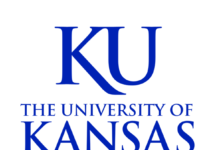Multiple wildfires have been reported across Kansas this week, as weather continues to challenge suppression efforts. The current wildfires in Kansas are separate incidents from the recent Anderson Creek wildfire in south-central Kansas.
The Kansas Forest Service, Kansas Division of Emergency Management, Office of the State Fire Marshal and Rocky Mountain Area Coordination Center have been working closely on this wildfire response. The legislation that establishes the Kansas Forest Service states that one of the powers and duties of the agency is to provide assistance for the prevention and suppression of forest, brush or grassland fires in nonfederal and unincorporated lands. The Kansas Forest Service Fire Program has assisted on fires in the state, in addition to national fire incidents that have occurred in the past.
Fire departments across Kansas have been taxed incredibly in the last two weeks, and despite heroic efforts and dedication, they are exhausted, and equipment is in need of repair. Each successive day of extreme fire activity makes it harder to secure needed equipment and volunteers.
The slight precipitation in some areas Tuesday night should not be considered a reduction in fire danger. Extreme fire danger continues today, April 7, and is expected through the weekend. There is currently a red flag warning in effect for most of Kansas. Anyone considering burning should wait at this time.
Landowners who have burned since Saturday, and any fire department that has responded to fire, are strongly urged to re-check that fire. Catching a small wisp of smoke or flare up is preferred, rather than waiting for fire to spread.
Containment is a term used to describe a fire that is completely cold along the perimeter of the fire. Fires are not considered contained until there is no threat of the fire escaping the perimeter of the fire boundary. Firefighters on the ground will have to monitor and “mop up” the fire until total containment can be established.
When planning a prescribed burn, a critical component to consider is the weather forecast two to three days after the burn. There is no such thing as “hurrying up to get a burn done before weather turns bad.” This advice is irresponsible, and has proven to be extremely dangerous. If the following two to three days present dangerous weather and wind, the simple solution is to not burn.
For updates, please like Kansas Forest Service on Facebook (https://www.facebook.com/kansasforestservice), follow on Twitter (https://twitter.com/KSForestService) and check the Kansas Forest Service Fire Blog (http://kansasforestservice.blogspot.com).



